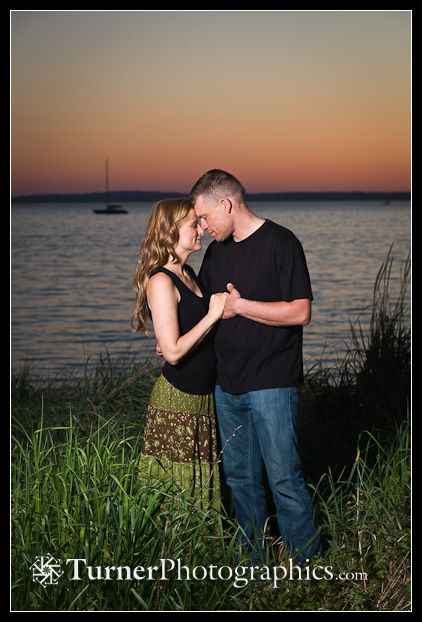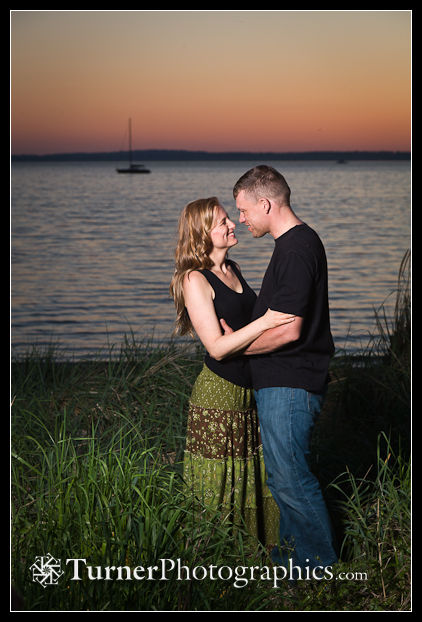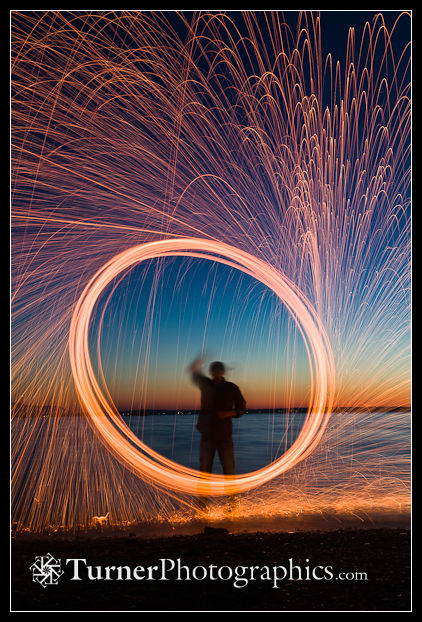Digital Photo Tip: Watch Your Horizon
The strongest photographs lead the viewer to concentrate their attention on the subject and minimize anything that might be distracting. One thing that’s easy to miss is the relationship of the horizon line to your subject, particularly when photographing people. You don’t want the horizon to slice through someone’s head.

Compare these two beach portraits of Pavlina and Daniel. In the first version, notice how the horizon is behind Daniel’s head. It divides the frame and interrupts our attention on the couple.

In the second version, I raised the camera a few inches so the horizon is above both of their heads. The horizon no longer intersects their heads and there’s nothing to interrupt our attention. The same rule about not slicing a head with the horizon applies to animals as well as to people.
You’ll notice that in both versions, there are actually two horizons. The upper horizon separates the sky from the water and the lower is between the water and the grasses in the foreground. Together, they divide the frame roughly into thirds.
Even when you don’t have people in the frame, be careful where you place your horizon. As a general rule, you don’t want it right in the middle of the frame. The classic position is about a third of the way down from the top. But you can also place it about a third of the way up from the bottom. The idea is to create an asymmetrical composition.
I made these images at a photographer’s gathering in Bellingham in early May. The portraits were lit with an Alien Bee studio flash outfitted with a beauty dish. It was about 10 feet from the couple and the exposure balanced for the ambient light of the sunset.

The last image is a form of light painting. The spirals and sparks are from steel wool, encased in a kitchen whisk, spun in a circle on the end of a chain during a 10-second exposure. Thanks to Clinton James, another Bellingham photographer, for demonstrating the technique, as well as several other fun ways to play with light at night.
For more images from our exploratory evening, visit the Alternative Light gallery on my Facebook page.

